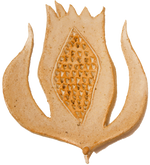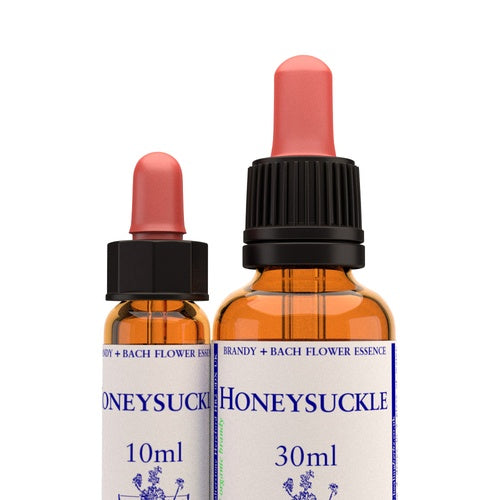Honeysuckle
Honeysuckle
£4.80
Honeysuckle details
Latin Name: Lonicera caprifolium
Group: Second nineteen
Emotional Group: Insufficient interest in present circumstances
Emotional response: Living in the past
Method: Boiling
Indication
Those who live much in the past, perhaps in a time of great happiness, or memories of a lost friend, or ambitions which have not come true. They do not expect further happiness such as they have had. [Bach: Twelve Healers and Other Remedies 1936]
Affirmation
Finally, let us not fear to plunge into life; we are here to gain experience and knowledge, and we shall learn but little unless we face realities and seek to our utmost. [Bach: Collected Writings]
Emotional State
For nostalgia, homesickness, those who live much in the past, past loves, happiness, regrets, success or failures, those who live on their memories, desiring to escape the present in a romanticised view of the past. [Barnard: Guide to the Bach Flower Remedies]
Habitat
General
Red Honeysuckles are either wild hybrids or garden escapes. They are native to the Mediterranean. Because it is the redness allied to the pattern of growth that gives its quality, a garden plant will embody the nature of this remedy state. It often grows strongly in an old cottage garden.
Britain
Wild red honeysuckles, though uncommon, can be found in woodlands and hedges in south-east England.
Honeysuckle - Form and Function
Nora quoted Dr Bach as saying of Honeysuckle:
This is the remedy to remove from the mind the regrets and sorrows of the past, to counteract all influences, all wishes and desires of the past and to bring us back to the present….
It is rather as if Pine had pushed Bach back towards childhood to re-evaluate family involvements and mentally, he had become stuck there – and so needed Honeysuckle to get back to the present.
Honeysuckle also links to Clematis. This is the way of it: Clematis looks to the future, dreaming of better times to come, Honeysuckle dreams of the past and does not expect such happiness again. In a letter, written July 1st 1935, about the time that Honeysuckle was found, Edward Bach wrote:
The prescription of these new remedies is going to be much more simple than at first appeared, because each of them corresponds to one of the Twelve Healers or the Seven Helpers.
For example: supposing a case is definitely Clematis and does fairly well but not a complete cure, give the corresponding new remedy further to help the cure.
Crucially, he did not leave us with the full information as to which of the new remedies corresponded with which of the old. ‘Enclosed a list of those already worked out’, he wrote in the same letter, ‘the rest we shall receive in due time’….
The remedies Clematis and Honeysuckle are like the two faces of the god Janus – one looking forward to the New Year, the other looking to the old – after whom January is named. Significantly, Lonicera caprifolium, which is Bach’s Honeysuckle, begins to break into leaf in December-January, when the sun is in the constellation of Capricorn. True, caprifolium is derived from the Latin capri, ‘of goats’, and this is followed in French by ‘Chevre-feuille’, the German ‘Geisblatt’ and in Italian ‘Capri-foglio’. But apart from goats having an appetite for young leaves at any time of year, caper the goat, takes us nowhere. However, the astrological sign Capricorn, ruled by Saturn, slow planet of memories and old age, does have a mythology and symbolism which speaks of Honeysuckle’s link to the past. Yet, caprifolium is only a name after all.
£4.25/10ml
Ask us anything
We are happy to answer any questions you may have about our product.
You may also like
Subscribe to our newsletter
Promotions, new products and sales. Directly to your inbox.
Quick links
Contacts
01947 606565
totallynaturalskincare@outlook.com
152 Church street Whitby North Yorkshire YO22 4BH




